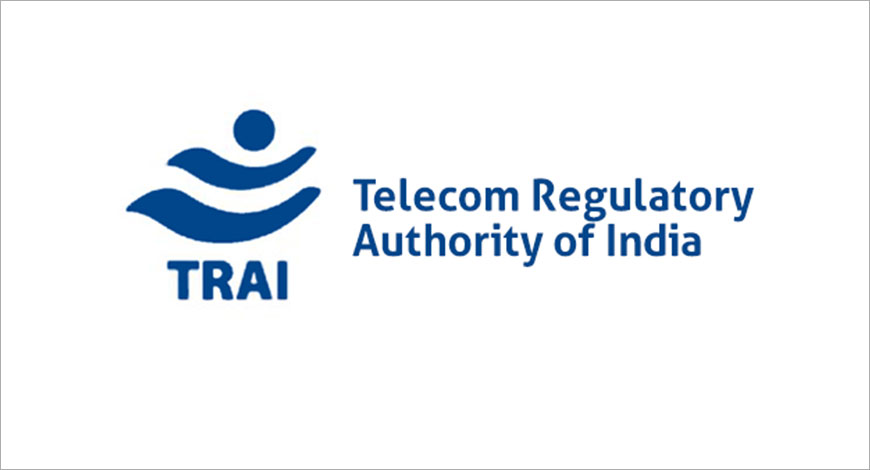New Delhi. : Telecom Regulatory Authority of India (TRAI) has today released Recommendations on the Tera Hertz Spectrum. The Department of Telecommunications (DoT), through its letter dated 08.12.2022, requested the Authority to provide recommendations, under Section 11(1)(a) of TRAI Act, 1997 (as amended), on ‘Open and De-licensed use of Unused or Limited used Spectrum Bands for Demand Generation for Limited period in Tera Hertz Range’.
In this regard, the Authority issued a consultation paper on Open and De-licensed use of Unused or Limited Used Spectrum Bands for Demand Generation for Limited Period in Tera Hertz Range on 27.09.2023 for seeking comments and counter-comments of stakeholders. In response, 17 stakeholders furnished comments, and two stakeholders furnished their counter comments. An Open House Discussion on the consultation paper was held through virtual mode on 08.03.2024.
Based on the comments received from stakeholders in the consultation process, and on its own analysis, TRAI has finalized Recommendations on the Tera Hertz Spectrum. The salient features of the Recommendations are as follows:
- The Government should introduce a new experimental authorisation for the spectrum in the 95 GHz to 3 THz range termed as ‘Tera Hertz Experimental Authorisation’ (in short, THEA).
- The main elements of the authorisation framework for THEA are given below:
- Purpose: The purpose of THEA should be to promote Research & Development (R&D), indoor and outdoor testing, technology trial, experimentation, and demonstration in the 95 GHz to 3 THz range.
- Scope: The scope of THEA should be to conduct R&D, indoor and outdoor testing, technology trial, experimentation, and demonstration in the 95 GHz to 3 THz range; and to market experimental devices designed to operate in the 95 GHz to 3 THz range via direct sale.
- Eligibility condition: Any Indian Entity (Academic institute, R&D Laboratory, Central/ State Government, public sector unit, Union Territory, Technology Park, telecommunication service provider, incubator, original equipment manufacturer etc.) should be eligible to obtain THEA.
- Marketing of experimental devices: Marketing of experimental devices designed to operate in the 95 GHz to 3 THz range should be permitted under THEA via direct sale.
- Authorisation period: The authorisation period of THEA should be up to five years. The authorisation should be further extendable for periods of up to five years at a time.
- Authorisation fee: The authorisation fee for THEA should be Rs. 1,000 for a period up to five years.
- Authorisation and assignment-exempt operations should be permitted in the 116-123 GHz, 174.8-182 GHz, 185-190 GHz, and 244-246 GHz frequency bands in India.
- The 77-81 GHz frequency range should be opened for authorisation and assignment-exempt operations of automotive radar systems in India.
The Tera Hertz Experimental Authorisation (THEA), recommended by the Authority, would encourage entrepreneurs and academia to develop innovative new technologies and services in the Tera Hertz band. THEA would help experimenters to evaluate the performance of products in the Tera Hertz band in the conception, development and design stages which would, in turn, pave a path to ascertain the technical viability of technologies and services built on the Tera Hertz spectrum. Upon implementation, the new experimental authorisation regime recommended by the Authority will provide a boost to the ‘Make in India’ initiatives of the Government.
The Authority is of the view that permitting the authorisation and assignment-exempt use of the 116-123 GHz, 174.8-182 GHz, 185-190 GHz, and 244-246 GHz bands would support the introduction of next-generation wireless technologies that could be deployed both indoor and outdoor, operating over distances ranging from less than a meter to several hundred meters, and deliver increased capacity and reliability for existing use cases as well as new and emerging use cases. Releasing these bands would also support a variety of innovative use cases that will significantly enhance operations and growth in vertical industries.
Vehicular radars can determine the distance and relative speed of objects in front of, besides, or behind a vehicle to improve the driver’s ability to perceive objects under poor visibility conditions or in blind spots. Long-range vehicular radars (LRRs) use up to 1 GHz of bandwidth and typically provide a spatial resolution of the order of 0.5 meters. The vehicular radar industry has also developed short-range vehicular radar (SRR) applications that use up to 4 GHz of bandwidth, and typically provide a higher spatial resolution than LRRs, of the order of 0.1 meters. Internationally, SRR units operating in the 77 GHz to 81 GHz band are used for several applications to enhance the active and passive safety of road users. Applications which enhance passive safety include obstacle detection, collision warning, lane departure warning, lane change aid, blind spot detection, parking aid and airbag arming. The combination of these functions is referred to in the literature as a “safety belt” for cars. Keeping in view that the short-range vehicular radar (SRR) applications can significantly enhance the safety of drivers and other road users, the Authority has recommended to permit authorisation and assignment-exempt operations of the 77-81 GHz band for automotive radars in India.
The Recommendations have been placed on the TRAI’s website (www.trai.gov.in). For any clarification/ information Shri Akhilesh Kumar Trivedi, Advisor (Networks, Spectrum and Licensing), TRAI may be contacted at Telephone Number +91-11-20907758.





